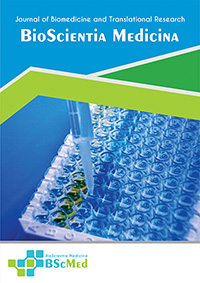Main Article Content
Abstract
Background: Chylous ascites, the peritoneal accumulation of triglyceride-rich lymphatic fluid, is a rare and clinically formidable condition, especially in children. It signifies a severe disruption of the lymphatic system. Systemic lymphangiomatosis, a congenital lymphatic malformation, is an exceptionally rare underlying cause. The cornerstone of effective treatment for refractory cases is the precise localization of the lymphatic leakage, which remains a profound diagnostic challenge.
Case presentation: We present the case of a 13-year-old female with systemic lymphangiomatosis who developed persistent, high-volume chylous ascites, with outputs reaching 1200 cc/day, following the surgical excision of an abdominal mass. Despite aggressive conservative management, the debilitating leakage continued, precipitating severe metabolic and nutritional derangements. To identify the point of extravasation, the patient underwent lymphoscintigraphy with Technetium-99m (99mTc) nanocolloid and hybrid Single Photon Emission Computed Tomography/Computed Tomography (SPECT/CT). While planar imaging confirmed a leak in the right lower abdomen, SPECT/CT provided definitive, high-resolution anatomical localization, pinpointing the site to the pre-peritoneal tissue at the level of the right anterior superior iliac spine. This finding directly guided a successful, targeted surgical repair.
Conclusion: This case demonstrates the indispensable role of 99mTc-nanocolloid SPECT/CT in the management of complex, post-surgical chylous ascites. By transforming a two-dimensional area of suspicion into a three-dimensional, surgically-actionable target, this hybrid imaging modality provided the essential roadmap for a curative intervention where all other measures had failed. This report advocates for the integration of SPECT/CT as a standard of care in the diagnostic algorithm for refractory chylous leaks, representing a key technology that facilitates definitive treatment and fundamentally improves patient outcomes.
Keywords
Article Details
As our aim is to disseminate original research article, hence the publishing right is a necessary one. The publishing right is needed in order to reach the agreement between the author and publisher. As the journal is fully open access, the authors will sign an exclusive license agreement.
The authors have the right to:
- Share their article in the same ways permitted to third parties under the relevant user license.
- Retain copyright, patent, trademark and other intellectual property rights including research data.
- Proper attribution and credit for the published work.
For the open access article, the publisher is granted to the following right.
- The non-exclusive right to publish the article and grant right to others.
- For the published article, the publisher applied for the Creative Commons Attribution-NonCommercial-ShareAlike 4.0 International License.





